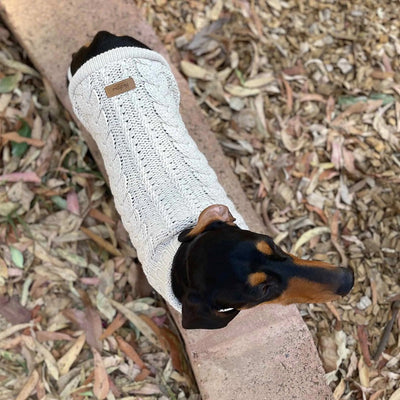If you're one of the lucky few who have a blue tongue lizard as a pet, you know just how fascinating and entertaining this skink can be.
These unique creatures require a lot of care and attention to ensure they live a long and healthy life. That's why we've put together a list of 10 essential tips for keeping your blue tongue lizard healthy and happy. From creating the perfect habitat to providing a well-balanced diet, we'll cover everything you need to know to be a responsible and loving lizard owner.
Whether you're a seasoned reptile enthusiast or a first-time lizard parent, these tips will help you give your blue tongue lizard the best possible life. So, let's dive in and explore the wonderful world of blue tongue lizards!
What do Blue Tongue Lizards Eat?
One of the most important aspects of caring for a blue tongue lizard is providing them with a well-balanced diet. These lizards are omnivores, which means they eat both plant and animal matter. In the wild, they feed on a variety of insects, snails, slugs, fruits, and vegetables. As a pet owner, it's your responsibility to ensure that your blue tongue lizard gets the nutrients they need to thrive.
When it comes to feeding your blue tongue lizard, it's best to offer them a variety of foods. This will ensure that they get all the vitamins and minerals they need to stay healthy. You can feed your lizard a combination of fresh fruits and vegetables, as well as insects such as crickets, mealworms, and waxworms. It's
important to avoid feeding your lizard any insects that are too large for them to swallow, as this can cause choking or other health problems.
Fruits and vegetables can be dusted with a calcium powder such as Vetafarm Multical Dusting Supplement.
You should also ensure that your blue tongue lizard has access to clean, fresh water at all times. You can provide a shallow dish of water for them to drink from, or use a water dish that is specifically designed for reptiles.
Creating the Perfect Habitat for Your Blue Tongue Lizard
Another essential aspect of caring for a blue tongue lizard is creating the perfect habitat for them. This includes providing them with a suitable enclosure, substrate, and hiding places.
When it comes to choosing an enclosure for your blue tongue lizard, bigger is always better. These lizards need plenty of space to move around and explore, so opt for an enclosure that is at least L 92cm x w 45cm x H 60cm in size. You should also ensure that the enclosure is secure and escape-proof, as blue tongue lizards are known for being skilled escape artists.
For the substrate, you can use a variety of materials such as reptile sand,
coconut fiber, or paper towels.
You should also provide plenty of hiding places for your lizard, such as rocks, logs, or hides. This will help them feel safe and secure in their new environment.
Maintaining the Right Temperatures for Your Blue Tongue Lizard
Blue tongue lizards are cold-blooded animals, which means that they rely on external sources of heat to regulate their body temperature. As a pet owner, it's important to ensure that your lizard's enclosure is at the right temperature to keep them healthy.
During the day, the basking area of your blue tongue lizard's enclosure should be between 29-30degrees celcius with a heat gradient that ranges from 24 degrees at one end to 32 degress celcius at the other end. Your bluey will move between the gradients accordingly.
 You can achieve these temperatures by using a combination of heat lamps,ceramic heaters, and under-tank heating pads.
You can achieve these temperatures by using a combination of heat lamps,ceramic heaters, and under-tank heating pads.
It's important to monitor the temperature of your lizard's enclosure regularly, as sudden drops or increases in temperature can be dangerous for their health. You can use a digital thermometer or temperature gun to check the temperature in different areas of the enclosure.
Providing the Right Lighting for Your Blue Tongue Lizard
In addition to maintaining the right temperatures, blue tongue lizards also require the right type of lighting to stay healthy. These lizards need access to both UVB and UVA light to help them metabolize calcium and stay healthy.
You can provide UVB lighting for your blue tongue lizard by using a UVB bulb that is specifically designed for reptiles. These bulbs need to be replaced every 6-12 months to ensure that they are providing the right amount of UVB radiation.
UVA lighting is also important for blue tongue lizards, as it helps them maintain their circadian rhythm and overall health. You can provide UVA lighting by using a regular fluorescent bulb or LED bulb.
Keeping Your Blue Tongue Lizard Hydrated
As mentioned earlier, it's important to ensure that your blue tongue lizard has access to clean, fresh water at all times. In addition to providing a water dish, you can also mist the enclosure regularly to help increase humidity levels and keep your lizard hydrated.
Blue tongue lizards also enjoy soaking in shallow water dishes, so you can provide a dish that is big enough for them to soak in comfortably. However, it's important to ensure that the water is not too deep, as blue tongue lizards are not strong swimmers.
Handling Your Blue Tongue Lizard
Blue tongue lizards are generally docile and easy to handle, but it's important to approach them with care and respect. These lizards can become stressed or agitated if they feel threatened, so it's important to handle them gently and avoid sudden movements.
To pick up your blue tongue lizard, place your hand underneath their belly and support their body. You can then lift them up gently and hold them close to your body to help them feel secure.
It's also important to avoid handling your blue tongue lizard too often, as this can cause them stress and anxiety. Limit handling to a few times a week, and always ensure that you wash your hands before and after handling them.
Health Concerns for Blue Tongue Lizards and How to Prevent Them
To prevent these health issues, it's important to ensure that your lizard's enclosure is clean and well-maintained. You should also ensure that they are getting a well-balanced diet and that their temperatures and lighting are optimal.
If you notice any signs of illness in your blue tongue lizard, such as lethargy, loss of appetite, or breathing difficulties, it's important to seek veterinary care as soon as possible.
Common Mistakes to Avoid When Caring for Blue Tongue Lizards
When it comes to caring for blue tongue lizards, there are some common mistakes that pet owners make. These include:
- Feeding your lizard an unbalanced diet
- Keeping them in an enclosure that is too small
- Using the wrong type of substrate
- Not providing the right temperatures or lighting
- Handling them too often or too roughly
To ensure that your blue tongue lizard stays healthy and happy, it's important to avoid these common mistakes and provide them with the best possible care.
Maintaining the Health and Happiness of Your Blue Tongue Lizard
Caring for a blue tongue lizard can be a rewarding and enjoyable experience, as long as you provide them with the right care and attention. By following the 10 essential tips outlined in this article, you can ensure that your lizard stays healthy and happy for years to come.

Remember to provide a well-balanced diet, create the perfect habitat, maintain the right temperatures and lighting, keep your lizard hydrated, handle them with care, and seek veterinary care if needed. By doing so, you'll be a responsible and loving lizard owner, and your blue tongue lizard will thank you for it.
© weknowpets 2023










